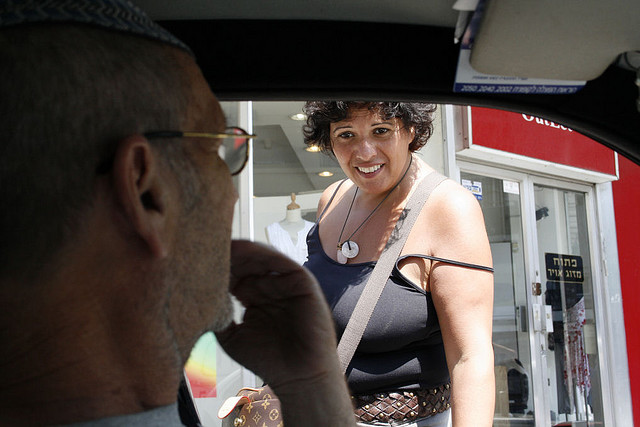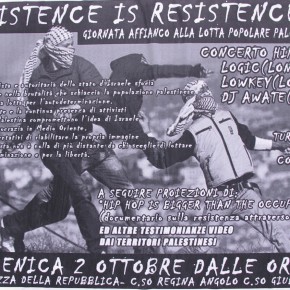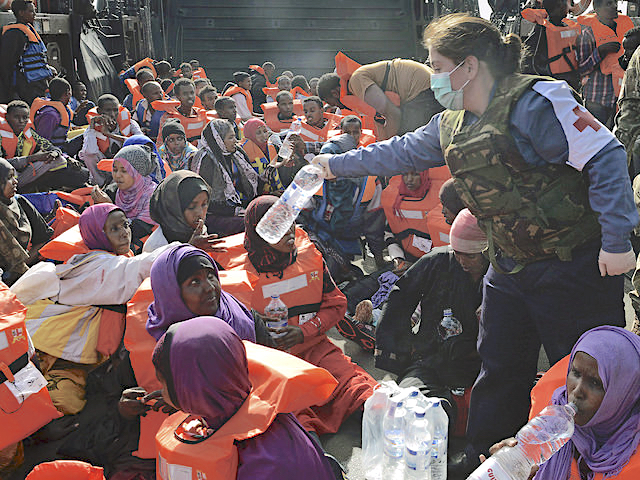Julia wanted to be a lawyer. But her family was poor. There was no money for university. So, in 2000, a few years after she’d finished high school in her native Russia, she applied to a company that promised overseas work. “They told me that after a year, I would be able to come back. They said I would have enough money to study and to buy a small apartment,” Julia says, speaking through a translator.
“I had many friends in Russia who were in university,” she adds. “And my boyfriend had just finished his bachelor’s degree in law studies.”
Although her life turned out different, it’s easy to imagine Julia as an educated, professional woman. Before the interview began, we chatted in Hebrew, sans translator, about linguistics and history. As we sipped tea, I almost forgot why we were meeting.
But she slid into her mother tongue as we began to discuss her past—her arrival in Israel, over a decade ago, and the two years of sex slavery that followed.
“I thought I would work as a caregiver, maybe in a nursing home,” Julia continues. “But when I arrived they beat me, took my documents, passport, everything.”
Although Julia doesn’t say that she was raped, a tremendous majority of the women who are sold into prostitution are. The men who sell them think of it not as rape but as trying the goods, like test driving a car.
Julia remembers that she felt “like furniture.” She was sold and passed around for two years. “All the time the men were selling us, trading us, sending us to new bosses,” she says.
***
Living conditions depended on the boss. Julia says that most bosses allowed the women to eat only once or twice a day, and then it was something small, “like a sandwich,” she recalls.
Some bosses allowed the girls to rest, some did not. “There were some that gave us two hours a day to sleep,” Julia says. “We were forced to work during our menstrual periods, if we were in pain. There were women that had [venereal diseases]. The bosses didn’t care, they didn’t care about anything.”
The bosses were concerned with one thing and one thing only: profit.
Julia says that she netted her owners as much as 7000 shekels (roughly 2000 US dollars) a day. But she didn’t receive any money.
“Nothing. They took it all.”
“In this hard period, I used drugs,” Julia says. Although it was her owners that introduced her to drugs—which they gave to the women to keep them relaxed and compliant—it’s difficult for Julia to discuss her previous drug use because she is so embarrassed.
“I’m ashamed,” she repeats, this time in Hebrew.
Julia was suicidal for much of those two years. And she tried to run away several times. But her escape attempts were unsuccessful until she met the Israeli man who would become her partner and the father of her three children.
The two met at a party. At first, he sought to buy her freedom. But her owners asked for 7000 US dollars, which was more than Julia’s partner could afford. So, he helped her escape.
***
But soon after that Julia ran into another wall—the Israeli legal system.
Today—almost a decade since she escaped forced prostitution and sex slavery—Julia lives in Israel without legal status. Because her partner is chronically ill with a serious heart problem, Julia is the sole provider for their three children. And despite the fact that all of her children are citizens of Israel, as is her partner, the Ministry of Interior refuses to grant Julia the work visa she needs to support them. And as a foreigner, Julia cannot get welfare.
So Julia works on the black market—cleaning and taking care of the elderly. These jobs are low-paying, sometimes less than minimum wage, and she struggles to make ends meet.
For more than two years now, Julia and her lawyer have both been unable to get an answer of any kind from the Ministry of Interior. But all signs suggest that the state’s obsessive focus on demographics—maintaining a Jewish majority—is to blame.
***
Julia is just one of the thousands of women who were brought to Israel and sold into prostitution during the 1990s and early 2000s. She is also one of the thousands, now mothers to Israeli children, who remain here without status.
Rita Chaikin is the coordinator of the anti-trafficking project at Isha L’Isha (Woman to Woman) – Haifa Feminist Center. An Israeli expert on the subjects of trafficking and prostitution, Chaikin has testified in international court cases and has co-authored a chapter in the 2010 anthology The Prostitution of Women, Men, and Children: A Global Perspective.
“In the 1990s, [Israel] wasn’t doing anything about [human trafficking],” Chaikin says.
In 2000, the United States began to monitor the problem internationally. And, in 2001, the US published its first annual Trafficking in Persons Report, which placed countries into three tiers according to severity of the situation—one being the best, three being the worst.
While most of the Western world—and a majority of Israelis consider their country as part of the Western world—ranked in tier one, Israel fell into the third tier.
“When I talked to the police [about the report],” Chaikin says. “I said, ‘We’re next to Afghanistan, Pakistan. It’s like a third world country.’”
The 2010 report put Israel in tier two, still below the rest of the Western world, citing, amongst other issues, the “debt bondage” of many migrant workers.
***
In the past, most of Israel’s traffickers were from the former Soviet Union. But a 2007 report on the topic, co-authored by Isha L’Isha and Hotline for Migrant Workers points out that these men were citizens of Israel who took advantage of existing holes in the legal system, lax enforcement, and judges who meted out extremely light punishments.
And even after the state buckled to American pressure and began taking the problem seriously, it sometimes neglected the victims. This is where the demographics come in.
Chaikin recounts the story of a woman who had escaped sex slavery only to find herself in Israel, stateless. Her former owners had stripped her of all her documents. And, with no way to identify her, embassy officials were reluctant to issue a passport.
Chaikin recalls approaching a Knesset member for help, “The Knesset member’s assistant said, ‘If we set a precedent for her [by giving her legal status], then we have to do it for the Palestinians, too.’”
“And that’s how I understood that, yes, this is political,” Chaikin says.
***
Two events more or less ended the trafficking of women to Israel—the 2006 arrest of a major seller in Moscow, which led to dozens of arrests in the following years, and a 2006 Israeli law that prioritized ending the sale of women.
Speaking of that legislation, Chaikin remarks, “If a state wants to fight the phenomenon [of human trafficking and the sale of women] here is the example.”
And, in a move that could be seen as an acknowledgment of the state’s role in creating the problem, the state awarded damages to some of the women. But many, like Julia, went overlooked.
While Chaikin sees 25 women like Julia a year—mothers of Israeli children who can’t get legal status for themselves—she remarks that, “There are many we don’t know of. There are several thousand in my opinion.”
“Suddenly we’re starting to see how the Ministry of the Interior is treating them,” she says, adding, “The Ministry of the Interior is the face of the country…”
“If you’re not a Jew, you almost don’t have rights. That’s the issue.”
Photograph courtesy of Miss Pupik. Published under a Creative Commons license.





